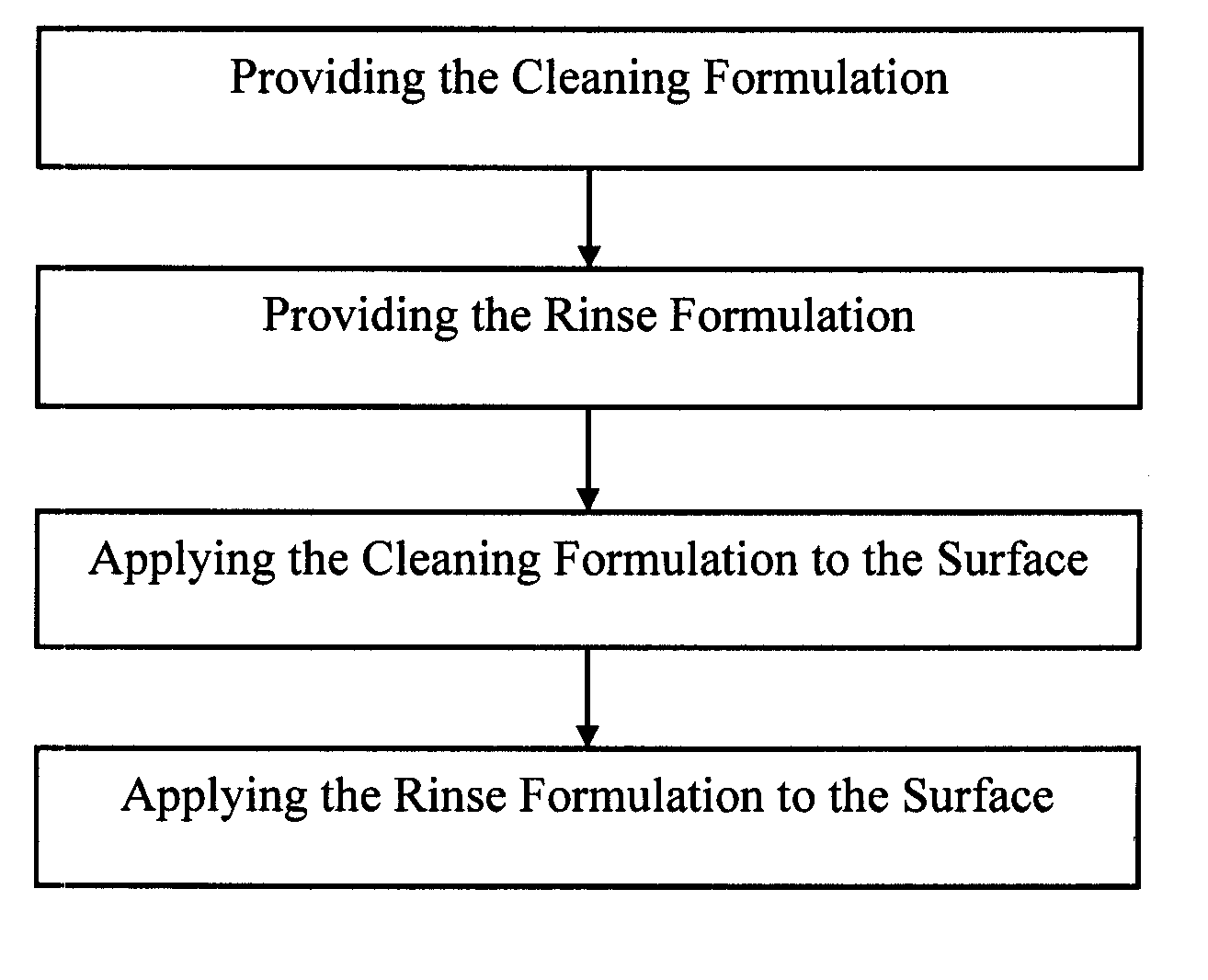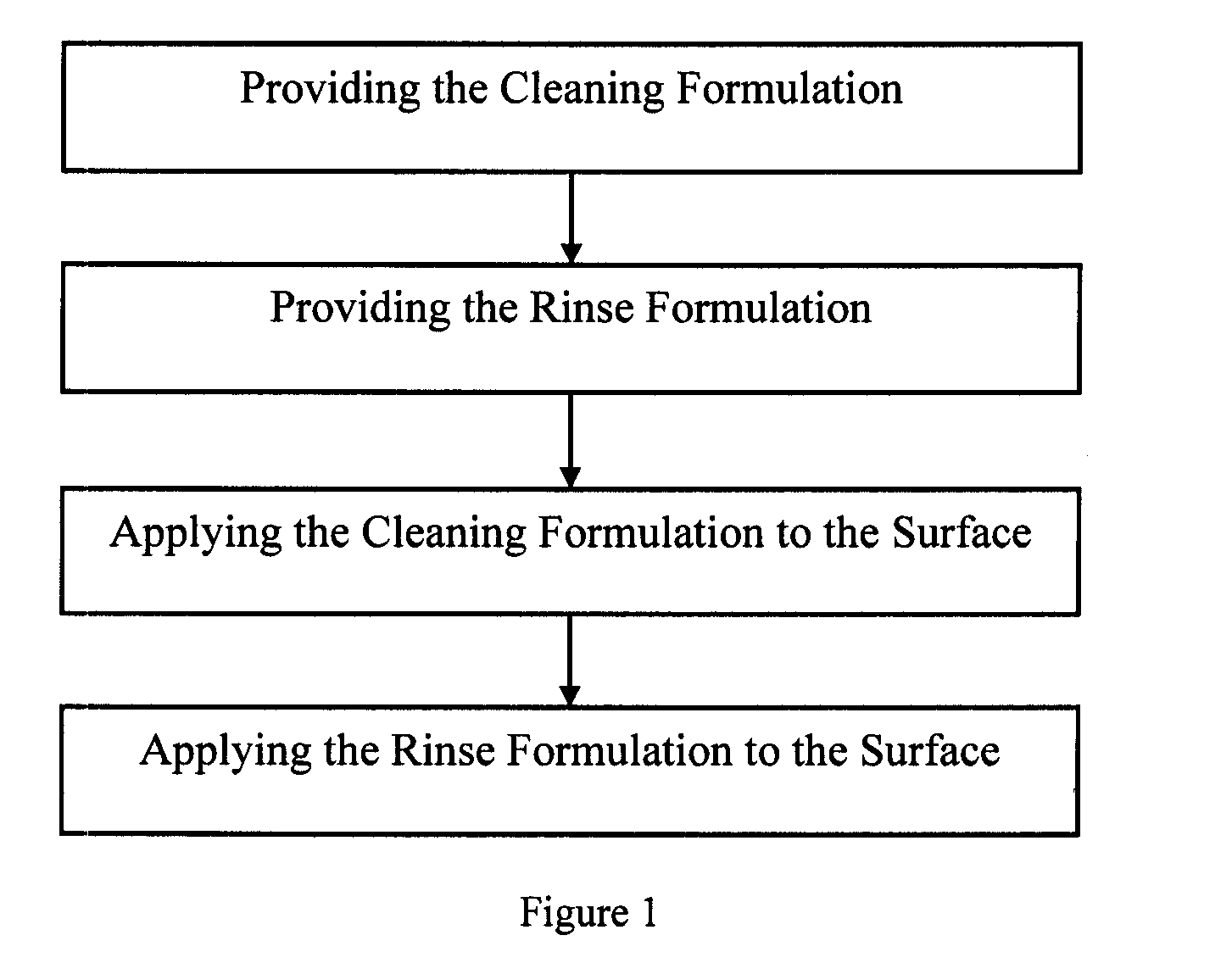Method of washing a surface
a technology of washing method and surface, applied in the direction of detergent compounding agent, cleaning using liquids, foam regulating compositions, etc., can solve the problems of affecting the cleaning effect of textiles, so as to reduce the critical micelle concentration, reduce the amount of cleaning formulation, and the effect of effective washing
- Summary
- Abstract
- Description
- Claims
- Application Information
AI Technical Summary
Benefits of technology
Problems solved by technology
Method used
Image
Examples
examples
[0095] A series of surfactant compositions (Surfactant Compositions 1-13) are formed according to the present invention. Specifically, amounts of two of the First, Second, Third, and / or Fourth Aliphatic Alcohols are added to a vessel and mixed. Subsequently, potassium hydroxide (KOH) as the Metal Catalyst is added to the vessel and mixed with the two Aliphatic Alcohols to form a mixture. The mixture is heated to 85° C. and agitated for 1 hour. Subsequently, the mixture is heated to 110° C. and adjusted to a pressure of approximately 90 psig. Then, Ethylene Oxide is added to the mixture to react with the two Aliphatic Alcohols, thereby forming Surfactants and forming the Polyethylene Glycol in situ. The Ethylene Oxide is added to the mixture at a rate of approximately 1100-1200 gm / hr while the temperature of the mixture is allowed to increase to approximately 145° C. After formation of the Surfactants and Polyethylene Glycol, the temperature of the reaction vessel is lowered to appro...
PUM
| Property | Measurement | Unit |
|---|---|---|
| cloud point | aaaaa | aaaaa |
| critical micelle concentration | aaaaa | aaaaa |
| critical micelle concentration | aaaaa | aaaaa |
Abstract
Description
Claims
Application Information
 Login to View More
Login to View More - R&D
- Intellectual Property
- Life Sciences
- Materials
- Tech Scout
- Unparalleled Data Quality
- Higher Quality Content
- 60% Fewer Hallucinations
Browse by: Latest US Patents, China's latest patents, Technical Efficacy Thesaurus, Application Domain, Technology Topic, Popular Technical Reports.
© 2025 PatSnap. All rights reserved.Legal|Privacy policy|Modern Slavery Act Transparency Statement|Sitemap|About US| Contact US: help@patsnap.com



